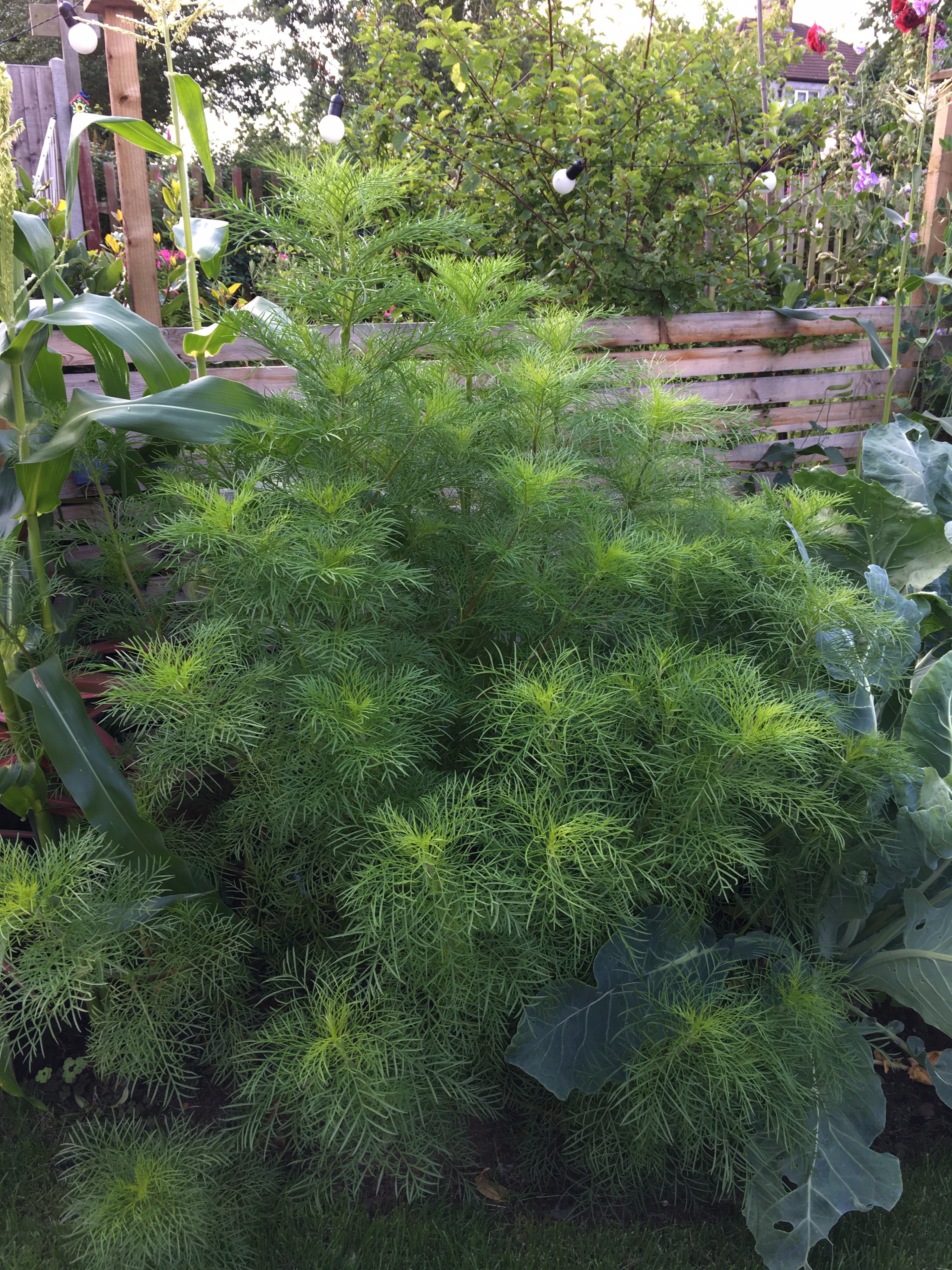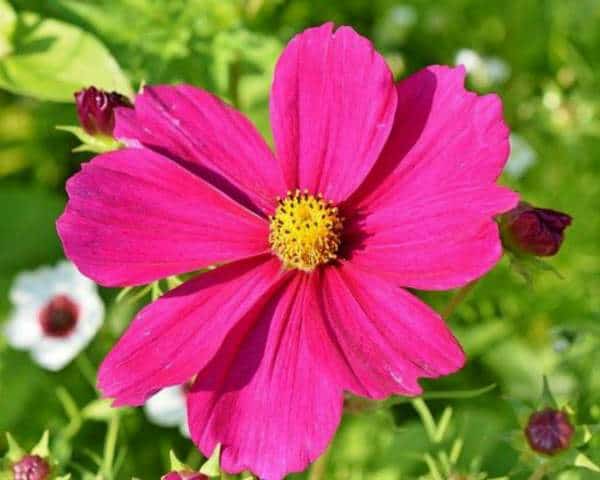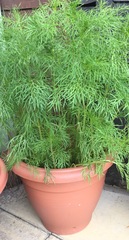
Cosmos don’t flower due of excessive shade, overwatering, or nutrient-rich soil, which encourages leaf growth rather than flowering. Because they have short days, cosmos need at least 12 hours of total darkness to bloom.
Cosmos blooms can be hampered by poor weather, seeds that have been preserved for longer than a year, too much fertilizer, and soil that drains slowly.
Because cosmos are short-day plants and need more hours of continuous darkness than daylight to flower, they may bloom later in the season.
Continue reading to learn why your cosmos isn’t blooming and the best ways to encourage it to do so.
Table of Contents
Not Enough Sunlight For Cosmos to Bloom
Many of the varieties of cosmos that gardeners grow are native to Mexico and the Southern US states, where they flower profusely with at least six hours of sunlight each day.
If your comos were planted in a shaded region of your yard, they will likely grow lanky and produce few flowers as they hunt for more light.
In fact, one of the most important things affecting how effectively your cosmos flower is the amount of sunlight.
If it’s not too late in the summer, sow fresh seedlings in a garden border with full sun and well-draining soil to encourage flowering. You should also prune back any overhanging tree limbs that may be casting shade and transfer your cosmos as soon as possible to a sunnier spot.
The cosmos has more energy to produce flowers and grow leaves when there is more sunlight.
Nutrient Rich Soil Prevents Flowering
Cosmos are indigenous to Mexico, where they flourish in the wild and flower profusely on nutrient-poor sandy soil.
It is likely that the soil in your yard is too rich in nutrients for cosmos to bloom if recent amendments like compost or manure have been applied to it.
Cosmos has a lot of robust, attractive foliage but many fewer blooms in rich soils.
How to Fix It: Recreating the soil characteristics of the desired native environment is the best way to grow cosmos so that it blooms.
Add some horticultural grit or sand to the soil before planting borders or sowing seeds (available at garden centers and on Amazon).
Grit or horticultural sand are inorganic elements that do not enrich the soil with nutrients but are excellent for enhancing drainage.
Sand is therefore added to soil or compost to assist balance the nutrient profile, making it less fertile and successfully simulating the soil profile to which cosmos thrive (and flower) in the wild.
A minor nutrient shortage triggers flowering in plants like cosmos that are accustomed to growing in difficult conditions because plants frequently need some stress stimulus to begin flowering (otherwise they tend to grow plenty of foliage and no flowers).
Consider the earth’s characteristics to be comparable to those of Mediterranean plants like lavender and rosemary, and with a beautiful sandy soil mix that drains properly, your cosmos should flower profusely.
(To learn why the lavender isn’t blooming, read my article.)
Too Much Fertilizer Reduces Flowering
Because they have adapted to sandy, low-nutrient soils, cosmos do not like fertilizer because it might cause excessive development of foliage without flowering.
Therefore, the use of fertilizer, organic feed, or even mulch is frequently to blame if your cosmos is tall and healthy-looking with lots of foliage but no flowers.
After fertilizer treatments, there isn’t much you can do to encourage blossoms, but if your cosmos is in full sun and is taken care of properly (with well-draining soil and not too much water), it might bloom in the fall.
Watering Cosmos Too Frequently Causes Fewer Flowers

Therefore, you should avoid overwatering the soil if you want the cosmos to bloom.
When it comes to enduring drought-like circumstances, Cosmos is extremely resilient. The promotion of healthy foliage with few flowers might occur if the soil is regularly kept moist.
Cosmos are adapted to sandy soils in arid climates, thus they may survive in pretty hard conditions.
Reduce the watering so that the soil has a chance to dry out in between waterings in order to encourage blooming on cosmos that may not be flowering as a result of overwatering.
Test the soil around the cosmos to a depth of two fingers, and then alter the watering schedule to ensure the soil has a chance to dry out.
- If the soil is still wet, wait a few days before watering it again to let it dry completely.
- Wait a day or so until the soil feels dry if you can still detect moisture, and then give the plant a nice soak to help the roots to spread and establish themselves.
It is crucial to recognize that less frequent watering shouldn’t be the only cause of dry soil; well-draining soil (with grit or sand added) should also produce the best blooms.
Timing of Planting Can Affect Blooms
The best time to plant cosmos seeds is in March or April, or after the risk of frost.
However, with perseverance and the correct circumstances, the cosmos can still bloom if seeds are sown outside of the ideal window of March and April.
The cosmos has less time to germinate, has to deal with unusually hot temperatures as it grows, and the blossoming period may be so late in the year that there may be a risk of frost, which could harm the flowers, if you sow in the middle of summer.
In addition, planting cosmos too early increases the chance of frost damage from a very early spring frost, which can prohibit blooming.
It is a good idea to sow the seeds indoors in a greenhouse to protect them from the possibility of frost in the early Spring and to give the seedlings time to grow in the early Spring so they can flower as early as possible and for a long time in the Summer.
Short Day Flowering- Cosmos Only Flowers When Days are Shorter then Nights
Due to their propensity to bloom best when the duration of the day is fewer than 12 hours, cosmos can frequently blooming best in late summer or fall (short day length plants).
Even though full daylight is good for flowering, if cosmos are exposed to bright light for more than 12 hours, it may hinder blossoming because they need a time of darkness.
This is as a result of the cosmos’ ability to detect seasonal change through the pattern of changes in day length, which allows the plant to know when to flower.
The longest day of the year in the northern hemisphere occurs on June 21. As the days get shorter after this day, cosmos begin to bloom.
Even for a little while, having a nighttime light source that may shine on your cosmos (and other plants with short days) can inhibit flowering.
Because cosmos require 12 hours of uninterrupted darkness to bloom, consider artificial sources of light that are bright after dark, like street lights or security lights.
The length of the day is typically longer in northern latitudes, which causes the cosmos to bloom later in the summer and possibly into the fall.
It can assist to promote blooms at any time throughout the Spring or Summer, or you can wait until late Summer or Fall for flowering, if you can successfully block off light sources (with horticultural fleece or something similar) such that the day length and hours of light are fewer than 12 hours.
Old Cosmos Seeds Do Not Flower as Well
While many plants’ seeds can be stored for a long time before being sown, if the seeds are older than a year, the germination rate may be lower.
In general, it is recommended to plant Cosmos seeds that you have purchased from the garden center that particular year.
The quality of the seeds may be impacted, which may have an impact on flowering, if they have been stored for a long time in less than ideal conditions.
When storing seeds, make sure they are in a pleasant, cool, dry spot where the temperature is stable and doesn’t drop below freezing or rise too high, such a garage or shed.
If your cosmos failed to bloom, I advise purchasing seeds from a reputable brand and planting them the following spring in full sunlight and well-draining soil without excessive watering. This should result in successful flowering.
Bad Weather Can Impact Blooms
Even when you have given your cosmos the best possible growing circumstances, there are still occasions when the weather simply does not let them to flower well.
The cosmos is less likely to display flowers if the Spring or Summer has been unusually cold, rainy, or with a lot of overcast days without much sunlight, as cosmos prefers full sun, warmer weather, and a dry summer to flower at its best.
By protecting the cosmos from excessive rain and possibly moving the container to a greenhouse where the sun, hot temperatures, and careful watering can encourage blossoming, you can boost the display of flowers if you are growing cosmos in pots.
Clay Soil Can Prevent Flowering

Cosmos may not always bloom if the soil is persistently moist.
The best option is to grow your cosmos in pots, containers, or raised beds because it is challenging to amend soil with a high clay content for growing them.
Compared to garden boarders, pots offer better drainage conditions, and it is much simpler to prepare a well-draining potting mix that is suitable for cosmos and encourages flowering than it is to modify a garden border.
The best time to start growing cosmos from seeds is typically around March or April to give cosmos enough time to grow and flower before frost. However, if you have already started growing cosmos in clay soil, you may be able to transplant the plugs into pots to improve flowering or if there is still time left in the growing season, you can grow some more cosmos.
Key Takeaways:
- If cosmos are grown in excessive shadow, persistently soggy soil, or with excessive nitrogen fertilizer, they will not flower. Cosmos require well-draining soil with few nutrients, lots of sunlight, and minimal watering.
- The cosmos cannot display blossoms if the day is longer than 14 hours.
- The best time to plant is in March or April. The cosmos may fail to bloom if seeds are sown too late.
- – Because some of these plants can grow really tall, staking may be necessary. … Even if it is only for a brief period of time, having a nighttime light source that may illuminate the area around your cosmos (and other plants with short days) may inhibit flowering.
- Consider man-made lighting sources that are bright after dark, including street or security lights, since cosmos require 12 hours of uninterrupted darkness to bloom.
